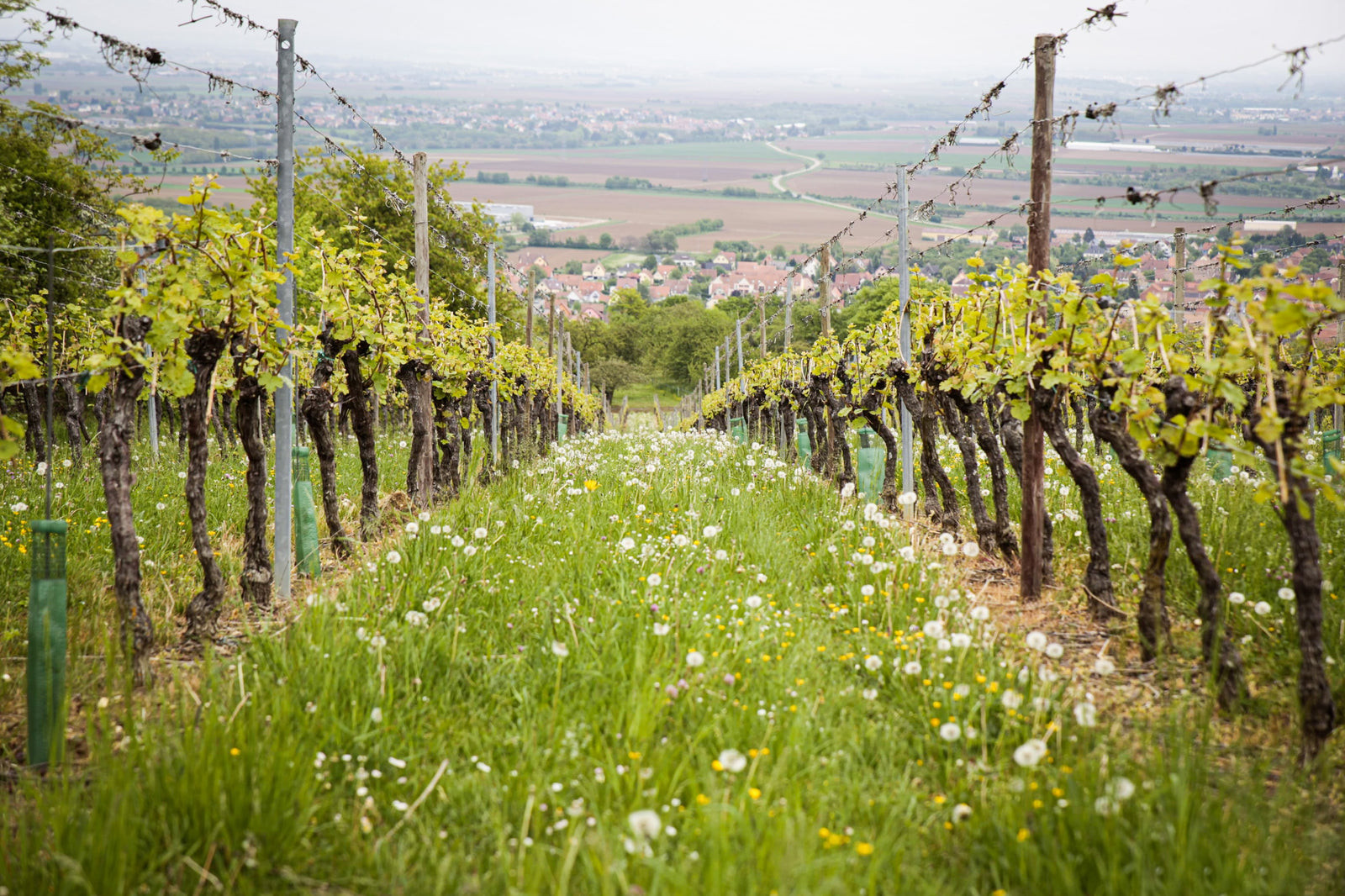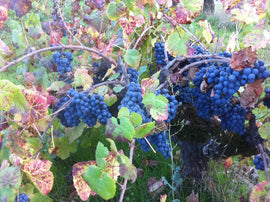Wine appreciation is one of few life pursuits where being wrong is actually fun. It’s part of the point in fact; we spend all this time trying all these wines in order to have our preconceived notions upended, hoping to be surprised (and delighted). With so many options and only so disposable an income though, it’s inevitable that we develop strong preferences from scant information; "I know what I like" is useful when you’re staring at a wine list with a decision to make, but it's a shorthand that can't help but confirm prior judgements. This month, rather than spotlight unfamiliar varietals, we’re focusing on two grapes with which everyone has a history: Cabernet Sauvignon and Sauvignon Blanc. Love or avoid these phonetically twinned pillars of the global wine industry, chances are you think you know what they’re like. We did too, until we tried this month’s selections - a Cab from Sonoma and a Sauv Blanc from southern Austria - and found ourselves surprised, then delighted. We hope you will be as well.
Whitehall Lane has been a benchmark Napa Cab producer for years. Founded in 1979 in Napa Valley’s Rutherford appellation, (legendary for its unique Cab-friendly soil, dubbed ‘Rutherford Dust), the winery’s present reputation rests mostly on the efforts of the Leonardini family, who purchased the property in 1993. Founders of the famous Napa Wine Exchange store in San Francisco, Tom and Karen Leonardini jumped at the chance to put all their industry knowledge and passion to use producing top shelf Napa Cab. Since then, they’ve expanded operations considerably, but it wasn’t until 2012 that Whitehall Lane ventured into neighboring Sonoma, with the purchase of the Rassi Vineyard: 16 acres of gravelly loam soil ideal for Cabernet Sauvignon at the base of the Mayacamas mountain range in eastern Sonoma. The 2017 bottling is a beautifully layered and complex expression of Sonoma terroir; recognizably Cab, but more fragrant and rustic than its Napa brethren. (Though it does contain 13% Merlot from Whitehall's Rutherford Estate.)
The accurately named Vulkanland Steiermark (Volcano Land Styria) consists of some 1,500 hectares of gentle green hills atop extinguished volcanic cones in the southeastern corner of Austria, bordering Slovenia and Hungary. Along with the volcanic soils, the region is distinguished from the rest of the Austrian wine world by a warmer climate and a staunchly independent local viticulture, less reliant on a handful of traditional varietals and more open to experimentation. A native of the area, Gottfried Lamprecht exemplifies all of these traits. After studying wine and horticulture at the University of Vienna, he began laboring mightily (see below for more details) to transform a hill in his home village of Buchertberg into the nine Edenic hectares under vine he refers to as his “Speilplatz”, or playground. Here, Sauvignon Blanc runs free as one among 100-or-so varietals, all planted from scratch by Gottfried, alongside potential future Wine of the Month material like Heunisch Rotgestreift and Schlehentrauben. The result is legitimately revelatory - none of us has ever tasted a Sauvignon Blanc quite like this before - though, intriguingly, we’ve been told that this wine is highly reminiscent of how Sancerre used to taste in decades past.
Cheers,
The PlumpJack Wine Team
|
2017 Whitehall Lane ‘Rassi’ Cabernet Sauvignon |
|
|
Region / Country of Origin: Sonoma Valley AVA, California |
About the winemaker: Jason Moulton became winemaker at Whitehall Lane in 2016. He is a graduate of the Lincoln University Viticulture and Enology program in New Zealand and spent more than a dozen years making wine in Napa Valley, Russian River, Canada, New Zealand, Bordeaux and South Africa. He has worked with renowned winemakers Philippe Melka, David Ramey, Kale Anderson and Ashley Heisey. About the winemaking: Upon hand harvesting in the early morning hours, the grapes were carefully destemmed and sent to tank for a whole berry fermentation. After inoculation with a select yeast, the grape must (juice, skins, and seeds) fermented at 82˚F, which allowed for a hot extraction on the skins. After fermentation and pressing, the Cabernet Sauvignon and Merlot were aged in 35% new French and American oak for 20 months before bottling. The final blend is 87% Cabernet Sauvignon and 13% Merlot and was bottled unfined and unfiltered. Tasting Notes: This beautifully blended 2017 Rassi Cabernet Sauvignon is exquisitely balanced with excellent fruit concentration. On the nose, this wine offers ripe blackberries, crème de cassis, black cherry cola, black pepper, pencil shavings, and toasted chestnuts. The palate offers plush but delicate tannins, fresh blueberries, sweet black plums, baked berry tart, toasted bread, and has a touch of walnuts that linger on the finish. |
|
Winemaker: Jason Moulton |
|
|
$25 bottle/$270 case |
|
|
Suggested Food Pairing: Rosemary Braised Lamb Shanks Eggplant Moussaka Blue Cheeseburger |
|
|
2019 Herrenhof Lamprecht Sauvignon Blanc Silt & Kies |
|
|
Region / Country of Origin: Vulkanland, Austria |
About the Winemaker: The Lamprecht family owns what was once the Vorau Abbey until it closed at the end of the 19th Century. The monks did grow vines on the same slopes, but the land has been without grapes for many decades. In 2006 Gottfried began planting block by block until reaching 9 hectares and has been certified organic from the start. Being able to start from scratch and control every element himself is what makes this producer special, apart from the wines being delicious of course. He grew up here. He’s raising his daughters here. He removed the apple and apricot orchards with his grandfather that once stood here. He established an organic field here before planting. He then planted his dream vineyard from scratch and felled trees from his property’s forest to have barrels coopered that now account for roughly 40% of all his barrels. He has published his own self-imposed Charta on farming and cellar work that lay out his guiding principles, but it is far from exhaustive. About the winemaking: The winemaking is clean and simple. Almost everything is de-stemmed and crushed. He avoids being overly phenolic, so there’s very little forced extraction or lengthy skin contact. Typical maceration is between 36-40 hours. All fermentation is spontaneous, he uses 300L to 600L oak (40% coopered locally), and extended lees aging is key (9-18 months). The only addition is SO2 at bottling, usually around 20-25ppm total. A full day of maceration in 300L neutral French, Hungarian, and Styrian oak barrels also adds some structure to the ever present salty sweet acidity of the estate. Tasting Notes: Lush, round and aromatic, with an herbaceous nose, deep melon and white plumb notes on the palate, and a flick of cat’s tongue on the finish. |
|
Winemaker: Gottfried Lamprecht |
|
|
$25 bottle/$270 case |
|
|
Suggested Food Pairing: Peach and tomato salad with garlic croutons Smoked salmon and goat cheese stuffed mushrooms Acorn squash and Feta casserole |
|
Find similar articles
cabernetcabernet sauvignonsauvignon blancwine of the monthwine of the month club




